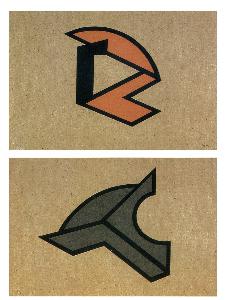Peter Laszlo Peri
László Weisz;Peter Laszlo Peri;Laszlo Weisz
Style: Constructivism;
Place: Budapest
Born: 1899
Death: 1967
Biography:
Peter Laszlo Peri (born László Weisz; 13 June 1899 – 19 January 1967) was an artist and sculptor. He was born in Budapest, Hungary, into a large proletarian Jewish family. He began studying fine art, then architecture, in Budapest in 1919. He settled in Berlin in 1920, where he created his first abstract geometric reliefs. In 1922, he had the first of two joint exhibitions with Moholy-Nagy at Der Sturm Gallery, Berlin. In 1923, his portfolio containing twelve linocuts was published by Der Sturm Verlag with accompanying text by Alfréd Kemény. His contributions to constructivism at the time were to challenge the surface of the wall by producing irregularly shaped wall reliefs and to open up new planes, anticipating the shaped canvas created after 1945; the discovery of concrete as a potential sculptural medium, colouring it if necessary, and the appreciation of the hard contour as a visual device, as seen in his collages and linoprints. These could be used to create a visual medium hovering between the relief and architecture; whereas Moholy-Nagy's Glasarchitektur achieved this using paint and canvas, Péri used less conventional media. In 1924, he began to work for the Berlin municipal architectural office and was there from 1924 to 1928. He signed the manifesto and statutes of the Association of Revolutionary Visual Artists of Germany (Assoziation Revolutionärer Bildender Künstler Deutschlands) (ARBKD) (ASSO) which, like other new and militant Communist art organisations, called for a reinvigoration of the idea of 'proletarian culture' and suitably positive images of working-class life and culture. He was also a member of Die Abstrakten (The Abstracts) and Rote Gruppe (Red Group). In 1929, he returned to representational painting and sculpture. Peri immigrated to England in 1933, after his wife Mary Macnaghten, granddaughter of social reformer Charles Booth, was arrested in possession of Communist propaganda. In 1934, Peri contributed 'several forceful works in coloured concrete' to the Artists’ International Association (AIA) exhibition The Social Scene. He made contact with John Heartfield. In England, he lived first in Ladbroke Grove, then in Hampstead; in 1938, he moved to a studio in Camden Town where he worked until 1966.




